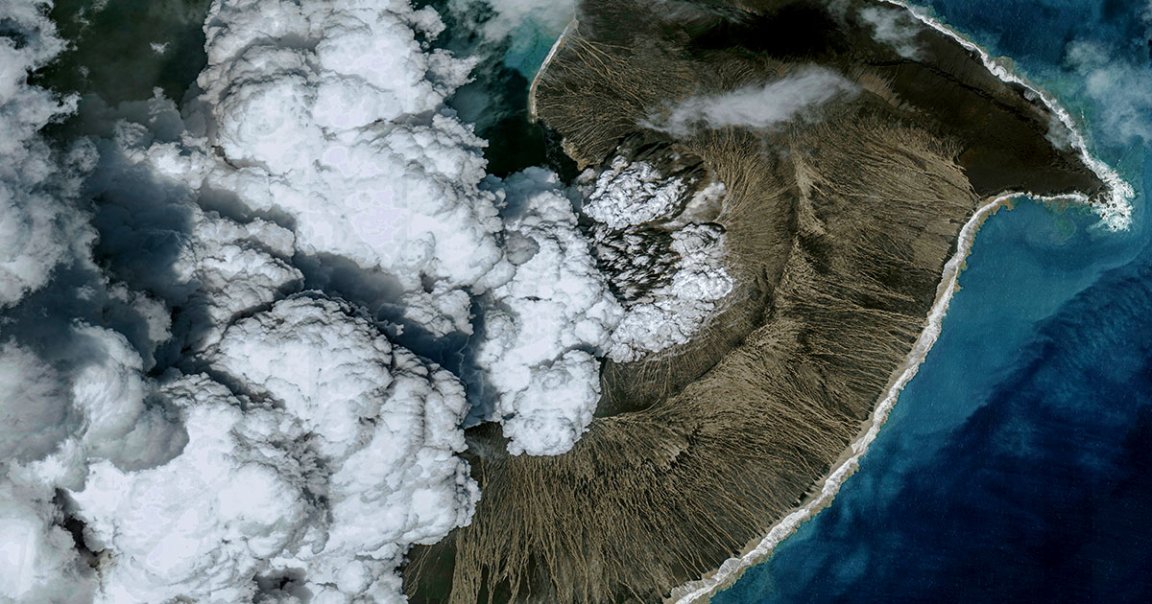
Zeus’s Playground
The eruption of the underwater Hunga volcano in the southern Pacific Ocean produced the most intense lightning storm ever recorded.
According to a new study published in the journal Geophysical Research Letters, the resulting “supercharged” thunderstorm crackled with an unholy 2,600 flashes every minute at its peak, totaling nearly 200,000 flashes overall.
“This eruption triggered a supercharged thunderstorm, the likes of which we’ve never seen,” said lead author Alexa Van Eaton, a volcanologist at the US Geographical Survey, in a statement.
If that isn’t already insane enough, Van Eaton says the team observed massive lightning rings centered above the volcano, which continuously expanded and contracted.
“The scale of these lightning rings blew our minds,” Van Eaton said. “We’ve never seen anything like that before, there’s nothing comparable in meteorological storms.”

Perfect Storm
Van Eaton explains that Hunga’s eruption — which itself is one of the most powerful in history — blasted molten rock and volcanic ash through the ocean, sending a towering plume over 36 miles into the air. This form of eruption is called “phreatoplinian,” and nothing of its kind has ever been observed with modern instruments.
On the way up, the molten material vaporized the seawater, which rose into the air and mingled with the ashy plume that continued to expand laterally after hitting its maximum height.
Now, all mixed together in a hellish brew, the collisions between the ash and the water generated incredible amounts of electricity — the ideal environment for lightning.
“With this eruption, we discovered that volcanic plumes can create the conditions for lightning far beyond the realm of meteorological thunderstorms we’ve previously observed,” Van Eaton said. “It turns out, volcanic eruptions can create more extreme lightning than any other kind of storm on Earth.”
Hell On Earth
This almighty display of power was only recorded thanks to a novel technique that combined lightning data from four different sources, using a mixture of light and radio wave sensors. Otherwise, the plume would have been too thick to penetrate.
From carefully combining the data, Van Eaton and her team observed the astonishing 192,000 lightning strikes, some originating from an “unprecedented” altitude of 19 miles.
This technique for observing the lightning strikes also proved invaluable in measuring the eruption’s duration. Because the plume obstructed the volcanic vent, the researchers had to rely on lightning data to understand how long the eruptions persisted.
“The January 15 activity created volcanic plumes for at least 11 hours,” Van Eaton said. “It was really only from looking at the lightning data that we were able to pull that out.”
More on: We Pumped So Much Water Out of the Ground That We Tilted the Earth, Researchers Suggest